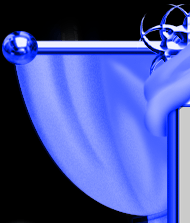|
Thank for your interest in the Paste and Powder solder offered by Unique Solutions.
We have several new products made with the enamellist and the jeweler in mind. These two new products will be introduced in a vendor booth, at the SNAG (Soc. of North American Goldsmiths) convention, March 2004 in St. Peterburg, Florida. These new products include IT and Eutectic soldering formulas.
Until now, Eutectic solder was only available in wire form, by making it, or buying it in bar form. Using these methods added additional time to the project since, for example, you had to shave or file off the chips as needed, adding additional time to the project. What we have done is eliminate all the work of making eutectic solder and need for hand filing, saving a lot of time. We are making this available in both paste and in a powder solder. Since the pastes have a flux, you do not add more flux to the formula, for the powder, you do add flux that can be either paste or liquid. It is recomended that you sift the powder over paste solder as the easiet way to apply the powder. Eutectic can be directly enameled over and there is no need for additional processing. The eutectic allows the enamellist to enamel directly over the solder without incurring any pitting.
For silver, this includes the IT formula and also the very newest formula, Eutectic. The silver formulas go from extra easy, easy, easy medium, medium, hard, IT and Eutectic.
For gold, there are many karats available these include 14, 18 and 20 karat for granulation work. The 22k formula is available in sheet stock. Gold solder is available in hard, medium and easy in paste format as well as special order for sheet. We can offer powder solder for for your specific requirement, subject to a minimum order. At the present time, I am only offering paste in gold color, but a full line including rose, white and green is offered in sheet by special order.
Powder solder has an excellent application for enamellists using the two layer champleve technique. Powder solder is sifted over a high melting flux and applied to the back of the piece (sweat technique) that has been sawn out and then will be laminated to the front of the back piece. This was tested extensively at a recent FSG enamel workshop. The one hint here is that you go in very hot and fast, not allowing oxygen to enter in between the solder and the piece where you are putting the solder. When you go in too timidly, oxidation occurs and bonding does not take place between the metal and the flowed solder.
The advantage of paste solders is that you can place it directly where you want, at the solder join, and continue from there; adding heat to make the solder melt. You do not add flux and the placement can be exact. It is all self -contained in a syringe, supplied with needle for correct placement. This allows fast application of the material which saves lots of time for the metal fabricator. There is no need to take time to either roll the wire solder, or cut the sheet solder, place it at the solder point and then add flux as needed on both surfaces. Then, you have to wait for it to dry, and hope as you dry it with a torch that you do not move the little chips. The organic binder in the paste solder makes the soldering a simple operation. The fluxes are contained in the solder, it is a shoot and go approach. The binder burns out completely, leaving a beautifully soldered join.
The same soldering techniques as used with other solders are employed. This includes good fit, making sure there are no gaps and providing even heating of the metals. As with regular solders, paste solder goes towards the heat. The organic binder burns off, and just as with any flux, make sure you are working in a well-ventilated area. Use enough solder to fill the join, with just a slight overlap, making sure there are no spaces in the pieces to be soldered together. You can check the fit of the two pieces to be joined by holding them up to the light and making sure that no light is shining through the place to be joined. It is best to place the solder between where the two pieces of metal meet and are to be joined. You can attract the solder by using heat to make it flow in the direction you desire, if it moved after placement. If you do have multiple soldering points and do not want your previous join to melt, then it is advised to pickle the item in between soldering procedures.
I hope this explains a lot of the uses of both paste and power solders.
|




